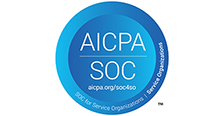
Resources
-
May 23, 2024
EEOC Publishes Final Guidance on Harassment
The U.S. Equal Employment Opportunity Commission (“EEOC”) published guidance on April 29, 2024 providing specific examples of the kinds of harassment it deems unlawful — including harassment based on race, sex, religion and other factors. The Guidance also addresses bathrooms, misgendering and what to do when an employee asks an employer not to investigate a complaint. The new Guidance, which took effect immediately, updates and replaces the EEOC’s previous guidance documents issued in 1999.
The new EEOC Guidance includes over 70 examples illustrating a wide variety of protected classifications, including providing scenarios involving older employees, immigrants, survivors of gender-based violence and pregnancy, childbirth, lactation and “related medical conditions.” “Related medical conditions” is broadly defined to include contraceptive choices and the decision whether to have an abortion.
For the first time, the Guidance recognizes harassment against LGBTQ+ workers and clarifies that harassment of transgender employees can be considered a Title VII violation. The Guidance advised that the denial of access to a bathroom consistent with an employee’s gender identity could constitute harassment, as well as, repeated misgendering of an individual (i.e. intentional misuse of an individual’s chosen personal pronouns).
The Guidance also provides some clarification for employers that are confronted with a request to accommodate an employee’s religious practices. Although employers are still required to engage in the interactive process, which is when the employer and the employee work together to come up with a reasonable accommodation, the Guidance explains that religious expression that “reasonably threatens to create a hostile work environment” need not be accommodated. Also, if a religious employee attempts to persuade another employee of the correctness of their beliefs, the conduct is not necessarily objectively hostile. However, if the employee objects to the discussion of religious beliefs but the other employee nonetheless continues to discuss religious beliefs, then the conduct may be deemed “hostile” and warrant corrective action.
The increase in remote/virtual workplaces is also addressed in the new Guidance by emphasizing that actionable harassment and discrimination can occur virtually such as via email, video conference or on social media.
The Guidance is not governing law, but it does provide authority that is commonly cited in legal actions to establish what employers should be doing to protect against harassment in the workplace. Historically, employer groups have formed coalitions to challenge EEOC guidance by arguing that it is an agency’s attempt to impose new legal obligations on employers and essentially usurp the role of the Legislature. Regardless whether the Guidance is challenged in court, the Guidance took effect on April 29, 2024. Therefore, until a court of law directs otherwise, employers should assess their employee handbooks to ensure that their harassment prevention policies and procedures reflect the new Guidance.
Employers seeking to apply best practices should have handbooks that clearly state:
- The employer has a zero-tolerance policy for harassment;
- The procedure for reporting workplace harassment;
- Employees will not be retaliated against for making a good faith complaint of harassment;
- The employer will investigate all good faith complaints of harassment and discrimination; and,
- The employer will take prompt corrective action where improper conduct has occurred.
In addition, employers should conduct workplace training on anti-harassment and discrimination policies and procedures (sexual harassment training is required by law in New York). Hill Wallack’s team of employment attorneys are well-equipped to help employers develop compliant, effective handbooks and procedures, as well as, to provide associated training for each level of your workforce.


